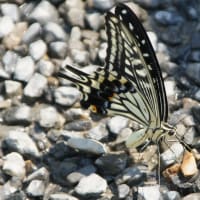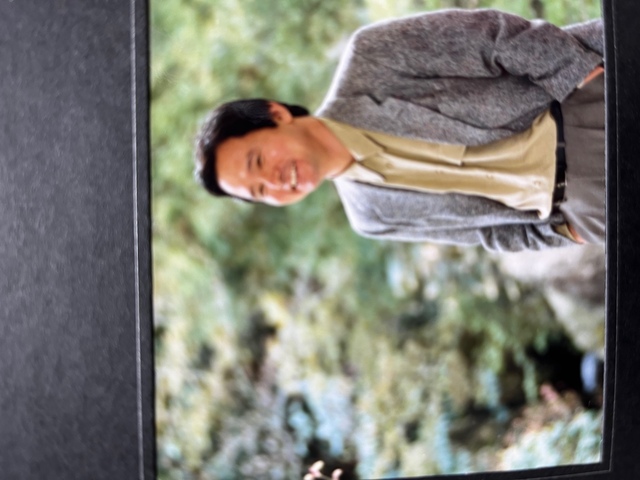The following is a continuation of the previous chapter.
Perhaps it is the nature of the Asahi Shimbun or its reporters' quality, but the paper's characteristic is that it does not back up its reporting.
Honda Katsuichi, who fabricated the "Nanking Massacre," finally admitted in an interview for Weekly Shincho (September 2014) that the photo he used was also a 'misuse.'
In response to the Weekly Shincho's pursuit of the photo used by Honda as having nothing to do with the Nanking Massacre, he replied, 'The explanation of the photo is based entirely on the Chinese side's investigative testimony. It is the first time in my memory that a photograph from 'The Japanese Army in China' (Asahi Shimbun) has been pointed out as having a different caption in the "Asahi Graph" (January 10, 1937 issue). It certainly seems to be a 'misuse' (Honda).
The photo Honda published as one taken just before the massacre (Honda's description: "Japanese soldiers rounding up women and taking them away") was, of course, a photo of "Nanking citizens laughing as they head home" that had been published in the company's pre-war "Asahi Graph" magazine (the description in the "Asahi Graph" magazine was: "A crowd of women and children from the Hinomaru tribe, protected by their soldiers (Japanese soldiers), return to their villages rather than doing odd jobs").
Honda also confesses that he has used false "on-scene photos" provided by the Chinese Communist Party and other materials as he is told.
A Japanese employee of the coal mine where Honda's article in Chugoku no Tabi (A Journey in China) mentioned Japanese nationals' massacre sent a protest letter, stating that the report was remarkably different from the facts.
It said that Honda was only representing the Chinese Communist Party's point of view, but the facts that came to light in the pursuit of the Weekly Shincho were
(1) The Chinese Communist Party, which has been on the run in mainland China, actually has little or no "photographic evidence" to assert itself.
(2) The Asahi Shimbun, which had ample supplies of reporters, cameramen, and planes, possessed a considerable amount of "live-action film and photographs in China."
(3) Photographs taken and saved by Asahi over 70 to 80 years were used to fabricate a "Nanking Massacre by the Japanese Army" with a completely different caption.
(1) As Honda says, "This is the first time in my memory," the Asahi reporters either didn't read or covered up past articles and photos that were blank until Shukan Shincho pursued them.
As a result, they couldn't refute the evidence and "lost."
(5) Honda admitted that it was a "misuse," but it misused "a serious picture of its own paper's past," which is equivalent to its own making.
It is not a problem that can be solved by 'misuse.'
Meanwhile, Uemura has been fleeing from the Sankei Shimbun's request for an interview and is desperately trying to defend himself by filing a lawsuit for "defamation" with a supporting lawyer.
Former president Kimura, who has since resigned, explained that he had confused the issue because his research hadn't progressed at the time. Still, Originally, the Women's Volunteer Corps was a "war scene" where Asahi protected the home front of 'a hundred known, two hundred points.'
They had nothing to do with the comfort women. They were the "mobilization of labor" that Asahi frequently encouraged the 100 million people of Japan to do during the war.
Uemura's mistake is too crude, but Asahi's reporters seem to be a group of people who don't read their own newspapers of the past at all.
This article continues.
Perhaps it is the nature of the Asahi Shimbun or its reporters' quality, but the paper's characteristic is that it does not back up its reporting.
Honda Katsuichi, who fabricated the "Nanking Massacre," finally admitted in an interview for Weekly Shincho (September 2014) that the photo he used was also a 'misuse.'
In response to the Weekly Shincho's pursuit of the photo used by Honda as having nothing to do with the Nanking Massacre, he replied, 'The explanation of the photo is based entirely on the Chinese side's investigative testimony. It is the first time in my memory that a photograph from 'The Japanese Army in China' (Asahi Shimbun) has been pointed out as having a different caption in the "Asahi Graph" (January 10, 1937 issue). It certainly seems to be a 'misuse' (Honda).
The photo Honda published as one taken just before the massacre (Honda's description: "Japanese soldiers rounding up women and taking them away") was, of course, a photo of "Nanking citizens laughing as they head home" that had been published in the company's pre-war "Asahi Graph" magazine (the description in the "Asahi Graph" magazine was: "A crowd of women and children from the Hinomaru tribe, protected by their soldiers (Japanese soldiers), return to their villages rather than doing odd jobs").
Honda also confesses that he has used false "on-scene photos" provided by the Chinese Communist Party and other materials as he is told.
A Japanese employee of the coal mine where Honda's article in Chugoku no Tabi (A Journey in China) mentioned Japanese nationals' massacre sent a protest letter, stating that the report was remarkably different from the facts.
It said that Honda was only representing the Chinese Communist Party's point of view, but the facts that came to light in the pursuit of the Weekly Shincho were
(1) The Chinese Communist Party, which has been on the run in mainland China, actually has little or no "photographic evidence" to assert itself.
(2) The Asahi Shimbun, which had ample supplies of reporters, cameramen, and planes, possessed a considerable amount of "live-action film and photographs in China."
(3) Photographs taken and saved by Asahi over 70 to 80 years were used to fabricate a "Nanking Massacre by the Japanese Army" with a completely different caption.
(1) As Honda says, "This is the first time in my memory," the Asahi reporters either didn't read or covered up past articles and photos that were blank until Shukan Shincho pursued them.
As a result, they couldn't refute the evidence and "lost."
(5) Honda admitted that it was a "misuse," but it misused "a serious picture of its own paper's past," which is equivalent to its own making.
It is not a problem that can be solved by 'misuse.'
Meanwhile, Uemura has been fleeing from the Sankei Shimbun's request for an interview and is desperately trying to defend himself by filing a lawsuit for "defamation" with a supporting lawyer.
Former president Kimura, who has since resigned, explained that he had confused the issue because his research hadn't progressed at the time. Still, Originally, the Women's Volunteer Corps was a "war scene" where Asahi protected the home front of 'a hundred known, two hundred points.'
They had nothing to do with the comfort women. They were the "mobilization of labor" that Asahi frequently encouraged the 100 million people of Japan to do during the war.
Uemura's mistake is too crude, but Asahi's reporters seem to be a group of people who don't read their own newspapers of the past at all.
This article continues.






















